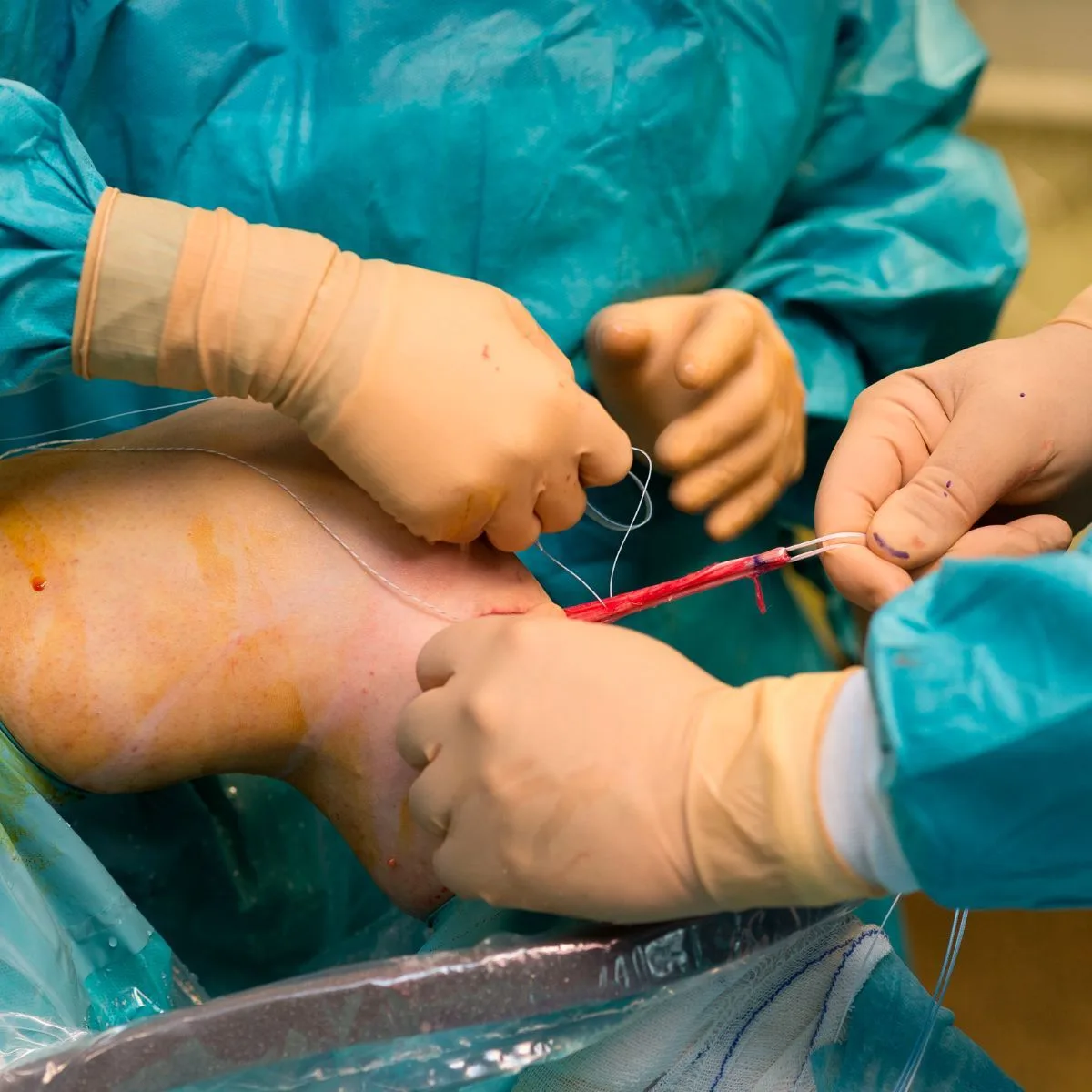Arthroscopic vs Laparoscopic: what to know about these two surgery techniques:
Introduction
Nearly three decades ago, surgery techniques were much more invasive than they are today.
Back then, a surgery like the removal of a gallbladder could only be made by making large incisions on the rib cage.
The recovery was painful and lengthy for patients.
Over the years, medical technology has advanced, lighting the way to more modern and minimally-invasive surgery techniques.
These have revolutionized medical procedures, making them faster and safer while minimizing downtime and pain.
Arthroscopic and laparoscopic may be two terms you’ve heard in more recent years.
They sound similar, but here’s what you should know about them.
Arthroscopic vs Laparoscopic – differences:
What is Arthroscopic Surgery?

@Getty
The prefix ‘arthro’ comes from the Greek word for ‘joint.’
Knowing this, you’d be correct to assume that arthroscopic pertains to the joints and treating them.
Knees and shoulders would be an example of something you may have arthroscopic surgery to repair.
As a minimally-invasive procedure, arthroscopic surgery uses a special type of video camera that is inserted into the body through small incisions.
This permits the camera to look around in those small, tight spaces and to repair tendons, ligaments, cartilage, and other tricky areas.
It has become the standard for procedures to treat problems with the joints.
ALSO READ: Eucerin Vs CeraVe – Which is Best for Dry Skin?
What is Laparoscopic Surgery?

@Getty
‘Lapara’ is a Greek word for the soft portions of the body that fall between the rib and hips.
We’d call that a loin or flank on any animal.
Meanwhile, ‘skopein’ is a Greek word for ‘examine,’ so putting these two together is how ‘laparoscopic’ came into existence.
This type of surgery also uses a small camera inside the body, though it is inserted via small incisions in the abdomen.
The purpose is to treat hernias, uterine problems, gallbladder disorders, the appendix, and other internal organs.
Weight reduction surgeries are also referred to as laparoscopic.
Both arthroscopic and laparoscopic procedures are considered to be endoscopic surgery.
Stemming from the Greek word for ‘within,’ it refers to using these small cameras to look inside the body.
Endoscopic procedures are all minimally-invasive and offer speedier recovery as well as less discomfort and pain.
In more recent times, it has been found that the lumbar spine in the lower back may benefit from being treated via endoscopes.
By using these small cameras, a herniated disc can be repaired and improve a patient’s mobility.
Years ago, this was unheard of, but as training has spread, more doctors are capable of performing this type of endoscopic surgery.
It’s groundbreaking, for this can be done in an outpatient setting under local anesthesia, cutting the pain and recovery for this lengthy procedure in half.
ALSO READ: Drunk vs Alcoholic: why these terms aren’t interchangeable?
What Does ‘Scope’ Mean in Medical Terms?
Medical terms can sound confusing since most of them are rooted in Greek.
If something is wrong and you’re in pain, it might worry you to hear all these unusual words flung around you.
More often than not, one word you’ll hear in medical settings, especially in orthopedics, is ‘scope’ as is with the case of arthroscopic.
Amazingly the first scopes, which were rigid tubes, were first created in 1806.
Philipp Bozzini created something called the ‘Lichtleiter’ or light conductor.
The purpose was to examine the canals and cavities within the human body.
Of course, since these were rigid, it was probably even more unpleasant than we can possibly fathom.
Still, this invention paved the way for those flexible scopes. These made going deeper into these uncharted internal parts easier and far less painful.
Now, there are many scopes out there. A cystoscope is for the bladder. For the uterus, it’s a hysteroscope. A rhinoscope is for the nose, and for a general gut area, it’s the endoscope.
What they all have in common is that they have a light source plus an eyepiece that contains a magnifier for better observation. Many have a video link to record the internal journeys too.
With the internal tube reflector system and steering assembly, a capable surgeon can navigate internally to treat the problem at hand.
Thanks to these scopes, surgeons can provide better care for those with pain or in emergency situations.
Even though scope procedures like arthroscopic and laparoscopic surgeries are not all that invasive, they still require anesthesia and a small cut.
The doctors that perform these endoscopic procedures have been trained in their individual disciplines as well.
For example, orthopedists perform arthroscopies. A general surgeon would be the one that would perform a laparoscopy for abdominal problems.
These are handy tools for ENT physicians to check out the ear, nose, and throat cavities.
Urologists use them for examining the urinary system too.
In short, there are many doctors in their respective areas of expertise who can perform endoscopic procedures.
If you have joint troubles, you may want to consider arthroscopic surgery, and should you have a problem with your appendix, you’ll likely need a laparoscopy.
Knowing this makes all those medical buzzwords a little less daunting.
Hopefully, you won’t need to have any kind of surgery, but if you do, you’ll at least have the chance to choose an endoscopic procedure like arthroscopic or laparoscopic surgery to handle the problem.
And if your doctor says something about a ‘scope’ that you’re pretty sure isn’t in regards to a microscope, don’t worry!
This minimally-invasive type of procedure is quick to recover from, and you’ll be back to your routine in no time.
ALSO READ: Yes, There’s a Difference Between Left and Right Twix
